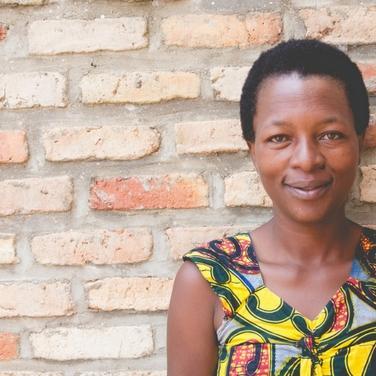6 Things You Didn’t Know About Our Mexican Textiles

Making textiles is a long-time, age-old tradition in Teotitlán del Valle, Mexico. And so when we shared a little ‘behind the scenes’ recently about the making of our Mexican rugs, we got so many questions, compliments, and feedback that on our recent trip to Mexico, we decided to capture more information on the process.
Not surprising to us was that each step is meticulously carried out in excellence to provide high-quality textiles. But what we were surprised to find out was six things you probably didn’t know about our Mexican textiles.
Here we go…

1. Earthy orange comes from a tiny insect
Orange and other earthy colors are obtained from a tiny bug called the cochineal insect. These little bugs have a three-month lifespan and reproduce just before dying. So prior to the end of this three month period, cochineals (and their offspring) are collected from the nopales (a local cactus plant), dried, crushed, and mixed with water.
The wool is then soaked in the mixture, and a brilliant orange and earth pigment is produced. Who knew such an unassuming bug could have such an incredible afterlife!

2. Certain items are only dyed after sundown
As Pastora and the other artisans demonstrated for us, although some pigments begin to darken on soaking wool in as little as half an hour, the treatment of certain colors, like dark blue dyes, can only be soaked after 6 pm once the sun has gone down. We are told that this is because the sun abuses the color very quickly.

3. Yellow comes from the pomegranate fruit
The yellow dye is made from the pomegranate fruit which is pre-dried. The dye properties are found in both the rind and the flowers with immature fruits giving pale yellows, while ripe fruits give golden yellows. Plus, because this dye is high in tannin it works particularly well to dye wool.

4. Medicinal plants deliver more than just medicine
Light blue comes from a medicinal plant called the muitle, while light pink/red tonnes come from a plant called the Palo de águila.

5. Turquoise is extracted from leaves
Dark blue and turquoise are extracted from the leaves of the juquilita plant, and our artisans source the plants from local markets!


6. Wool is brushed by hand before being spun
While making pigments is one step in the process, preparing the wool to be dyed is another. We were equally excited to hear about how the wool is prepared before it ever reaches the colors and then later, the loom.
Once the wool is collected, it is brushed by hand so that it can be spun and wound into large bundles that are easier to handle at the loom. Depending on what the artisan is making, the wool goes through the process of color washing to achieve the right tones for things like our rugs and lumbar pillows. Not only are the rugs and pillows handwoven on large looms, but the wool is also dyed by hand with natural resources, which you just heard about!


Whenever our rugs or lumbar pillows are complemented, we are filled with thoughts of our artisans who pour their creativity and craft into each one.
As you have now learned, each step in the process is carried out with incredible attention to detail to provide high-quality textiles that add special touches to your modern home.
Each time we visit any of our artisans, we leave more impressed at their expertise in their artistry and commitment to excellence. We love learning from them and hearing about how our partnership equips them to carry out this craft that has been passed down from generation to generation.


Leave a Reply
Want to join the discussion?Feel free to contribute!